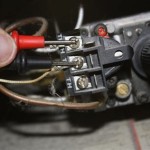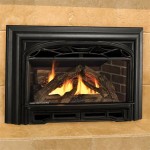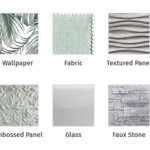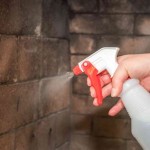How To Finish A Fireplace Surround
A fireplace surround serves as a focal point within a room, enhancing the visual appeal and architectural character of the space. Properly finishing a fireplace surround not only improves its aesthetic qualities but also protects the materials from heat and potential damage. The process involves careful preparation, appropriate material selection, and meticulous execution to achieve a durable and attractive result. This article outlines the steps involved in effectively finishing a fireplace surround.
The initial stage involves thoroughly assessing the existing surround's condition. Look for any signs of damage, such as cracks, chips, or loose sections. Determine the material composition of the surround, as this will dictate the suitable finishing products and techniques. Common materials include wood, stone, brick, and metal, each requiring specific treatment. Cleaning is a critical preparatory step. Remove dust, dirt, soot, and any existing finishes that may interfere with the new finish. Use appropriate cleaning agents based on the material; for example, a mild detergent for wood or a specialized masonry cleaner for brick.
After cleaning, repair any imperfections. Fill cracks and chips with appropriate patching compounds designed for the specific material. For wood surrounds, wood filler is effective. For stone or brick, use a patching mortar or epoxy formulated for masonry. Sand the patched areas smooth to blend seamlessly with the surrounding surface. If the existing surround has a glossy finish, lightly sand the entire surface to create a better adhesion for the new finish. Remove all sanding dust before proceeding.
Key Point 1: Selecting the Appropriate Finish
The selection of an appropriate finish is paramount to both the appearance and the longevity of the fireplace surround. Several factors should influence this decision, including the material of the surround, the desired aesthetic, and the level of heat exposure. For wooden surrounds, options include paint, stain, varnish, and lacquer. Paint provides a wide range of color choices and finishes, from matte to gloss. Stain enhances the natural grain of the wood, offering a more rustic or traditional look. Varnish and lacquer provide a protective coating that is resistant to heat and moisture. Select heat-resistant paints and varnishes specifically formulated for use near fireplaces.
For stone or brick surrounds, consider options such as sealant, paint, or a clear coat. Sealants protect the porous surface of the stone or brick from moisture and staining. Paint can be used to alter the color of the surround, but it is essential to use masonry paint that is breathable and allows moisture to escape. Clear coats provide a protective layer without altering the natural appearance of the material. Metal surrounds can be finished with paint, powder coating, or a clear protective coating. Select finishes that are specifically designed for metal and can withstand high temperatures.
Before applying the chosen finish to the entire surround, perform a test application in an inconspicuous area. This allows you to assess the color, appearance, and adhesion of the finish. Allow the test area to dry completely before making a final decision. Always follow the manufacturer's instructions for application and drying times.
Key Point 2: Application Techniques for Different Materials
The application technique varies depending on the material of the fireplace surround and the chosen finish. For wooden surrounds, apply paint or stain with a brush, roller, or sprayer. Use a high-quality brush for a smooth, even finish. Apply thin, even coats and allow each coat to dry completely before applying the next. Sand lightly between coats to remove any imperfections. For varnishes and lacquers, consider using a sprayer for a professional-looking finish. Ensure proper ventilation when using spray equipment.
For stone or brick surrounds, apply sealant or paint with a brush, roller, or sprayer. Use a masonry brush for textured surfaces. Apply the finish evenly, working it into the pores of the material. For porous materials, multiple coats may be required to achieve adequate coverage. Allow each coat to dry completely before applying the next. When painting brick, consider using a primer specifically designed for masonry to improve adhesion and prevent the paint from peeling.
For metal surrounds, clean the surface thoroughly before applying any finish. Remove any rust or corrosion with a wire brush or sandpaper. Apply a primer specifically designed for metal to improve adhesion. Apply paint or powder coating in thin, even coats. Allow each coat to dry completely before applying the next. For powder coating, follow the manufacturer's instructions for curing the finish.
Key Point 3: Safety Considerations and Maintenance
Safety is paramount when working with finishing products, particularly near a fireplace. Always work in a well-ventilated area to avoid inhaling harmful fumes. Wear appropriate personal protective equipment, such as gloves, eye protection, and a respirator, as needed. Carefully read and follow the manufacturer's instructions for all finishing products.
After finishing the fireplace surround, allow the finish to cure completely before using the fireplace. This ensures that the finish is fully hardened and resistant to heat. Clean the surround regularly to remove dust, dirt, and soot. Use a mild detergent and a soft cloth to avoid scratching the finish. Inspect the surround periodically for signs of damage or wear. Touch up any damaged areas promptly to prevent further deterioration.
Proper maintenance helps preserve the appearance and longevity of the finished fireplace surround. Avoid using abrasive cleaners or harsh chemicals, as these can damage the finish. Consider applying a protective sealant or wax periodically to maintain the luster and protect the finish from moisture and staining. With proper care and attention, a well-finished fireplace surround can remain a beautiful and functional focal point in a room for many years.

Diy Fireplace Finished Addicted 2 Decorating

Diy Faux Plaster Fireplace Surround Chelsey Freng

11 Popular Materials For Fireplace Surrounds

How To Tile A Fireplace Surround And Hearth Build Basic

Building An Easy Modern Fireplace Mantel Young House Love

Diy Faux Plaster Fireplace Surround Chelsey Freng

Fireplace Makeover With Roman Clay Hamilton Park Home

Diy Venetian Plaster Fireplace Grace Oaks Designs

Diy Faux Cast Stone Fireplace Part 2 Building The Mantel Top Shelf

Simple European Farmhouse Barn Beam Fireplace Mantel Makeover Open Doors Hearts
Related Posts








